Abstract
The mechanism of acidification by the urinary bladder of the water turtle was studied in an in vitro system which permitted control and measurement of electrical and concentration driving forces. The rate of hydrogen ion secretion was measured by means of a pH stat technique in the absence of exogenous carbon dioxide and bicarbonate.
Transport of hydrogen ion into the solution bathing the mucosal surface of the bladder was associated with the appearance of alkali in the serosal compartment. The mean rate of hydrogen ion secretion in the absence of electrical and concentration gradients across the bladder was 0.96 μmole/hr. The secretion rate was only slightly greater in the presence of the spontaneous potential difference. The maximal hydrogen ion gradient that could be generated by the bladder was 3.33 pH units in the presence of the spontaneous voltage and 3.02 pH units in the short-circuited state.
Hydrogen ion secretion was markedly reduced by acetazolamide and anaerobiosis, which indicated that under our experimental conditions acidification depended on the production and enzymatic hydration of metabolic carbon dioxide. On the basis of the stoichiometry of the pH changes across the membrane under different conditions, it is suggested that the active transport mechanism for hydrogen ion is located near the mucosal surface of the epithelial cell and that the alkali generated in back of the pump moves passively into the serosal fluid along an electrochemical gradient.
Full text
PDF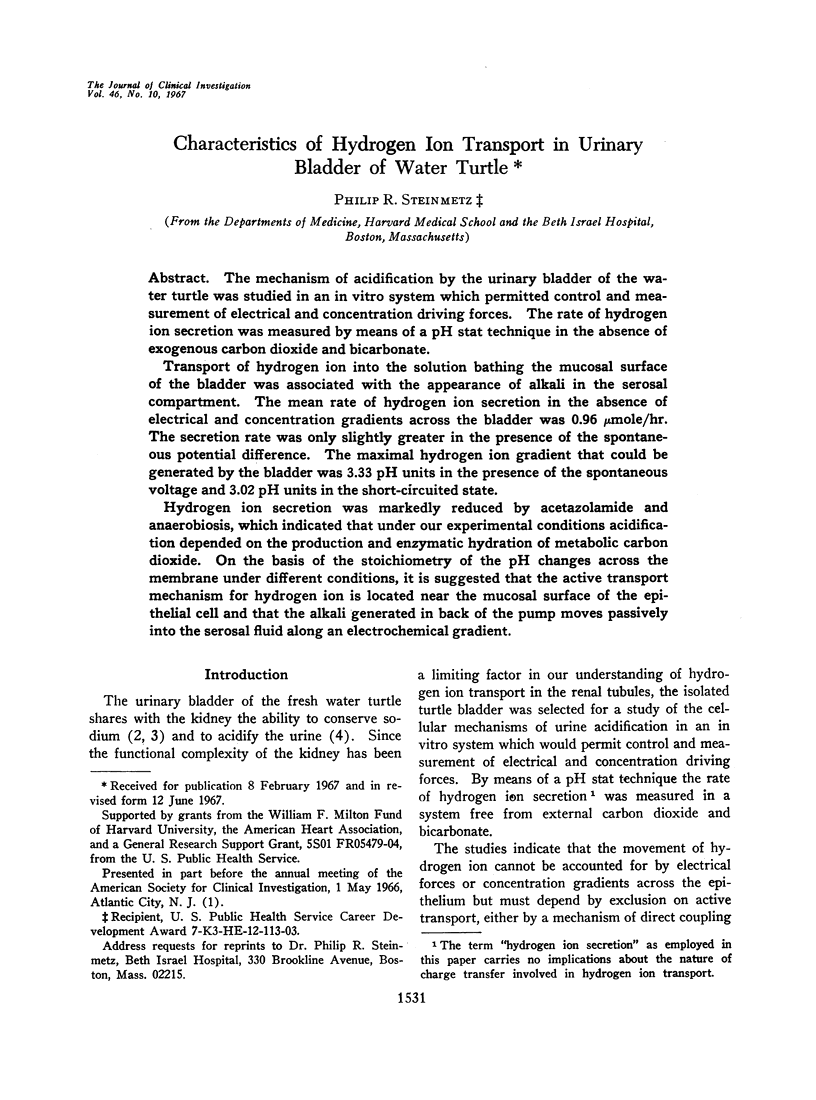
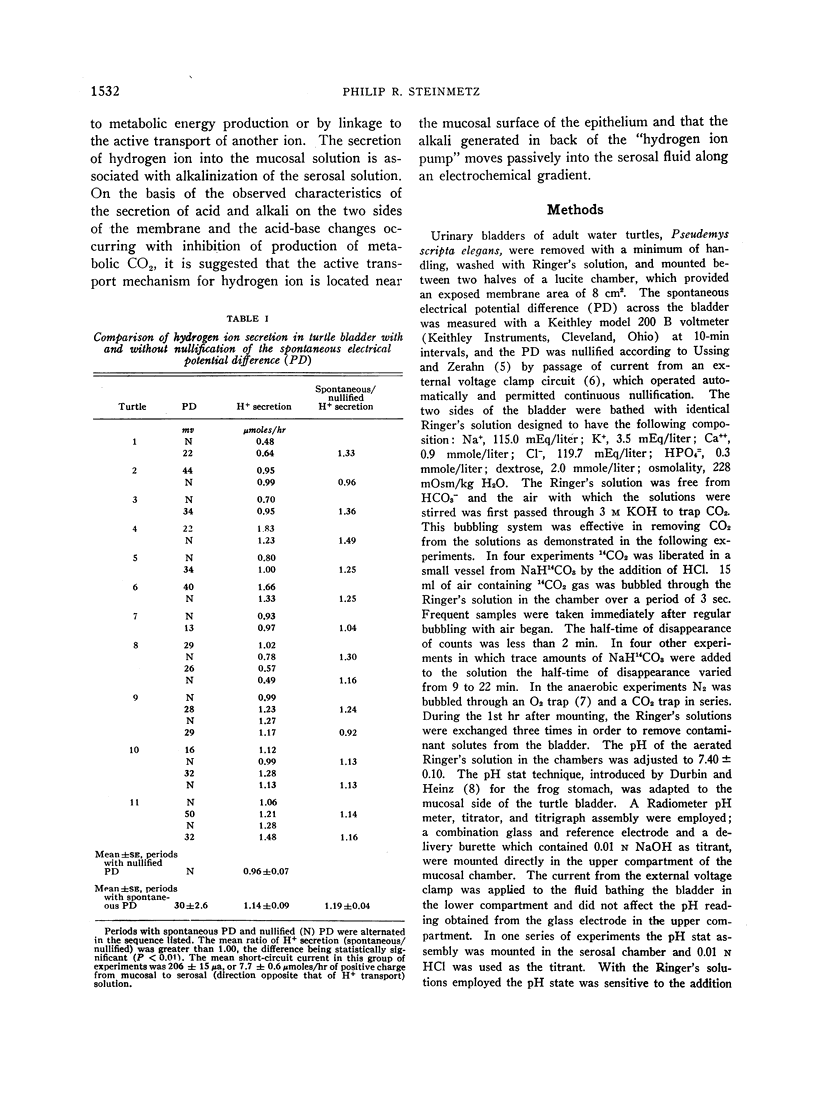
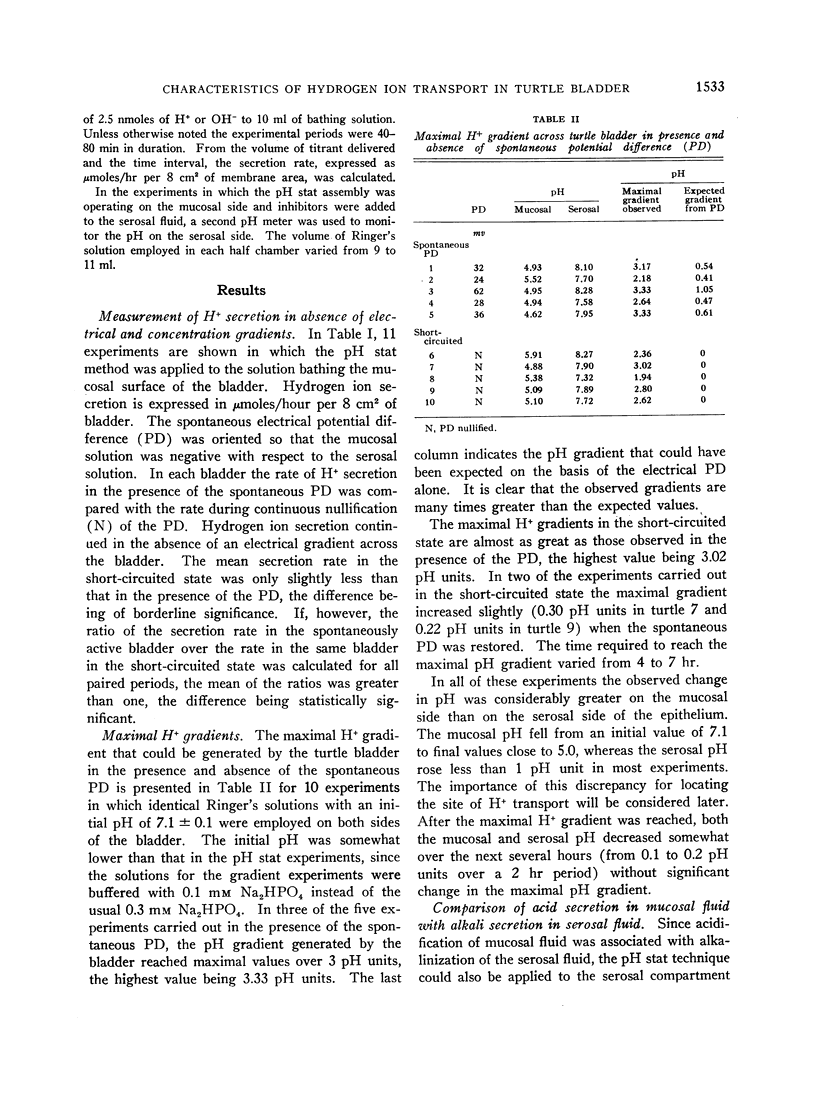
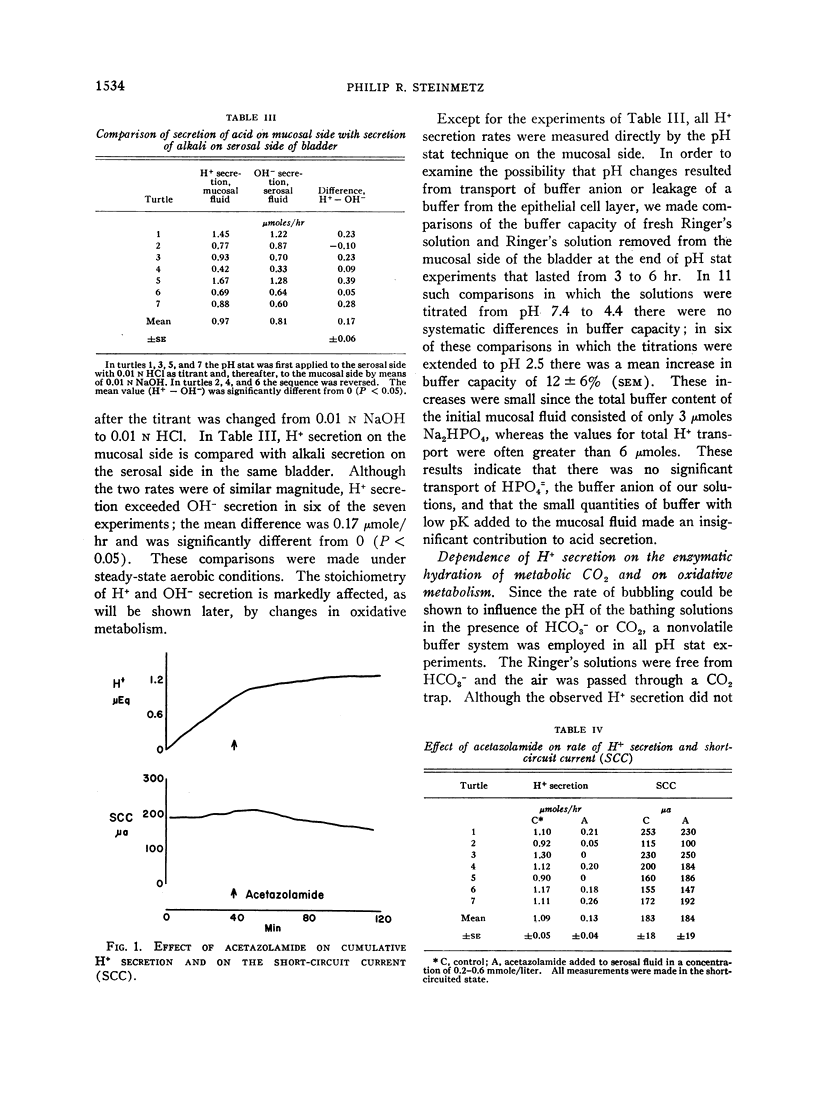
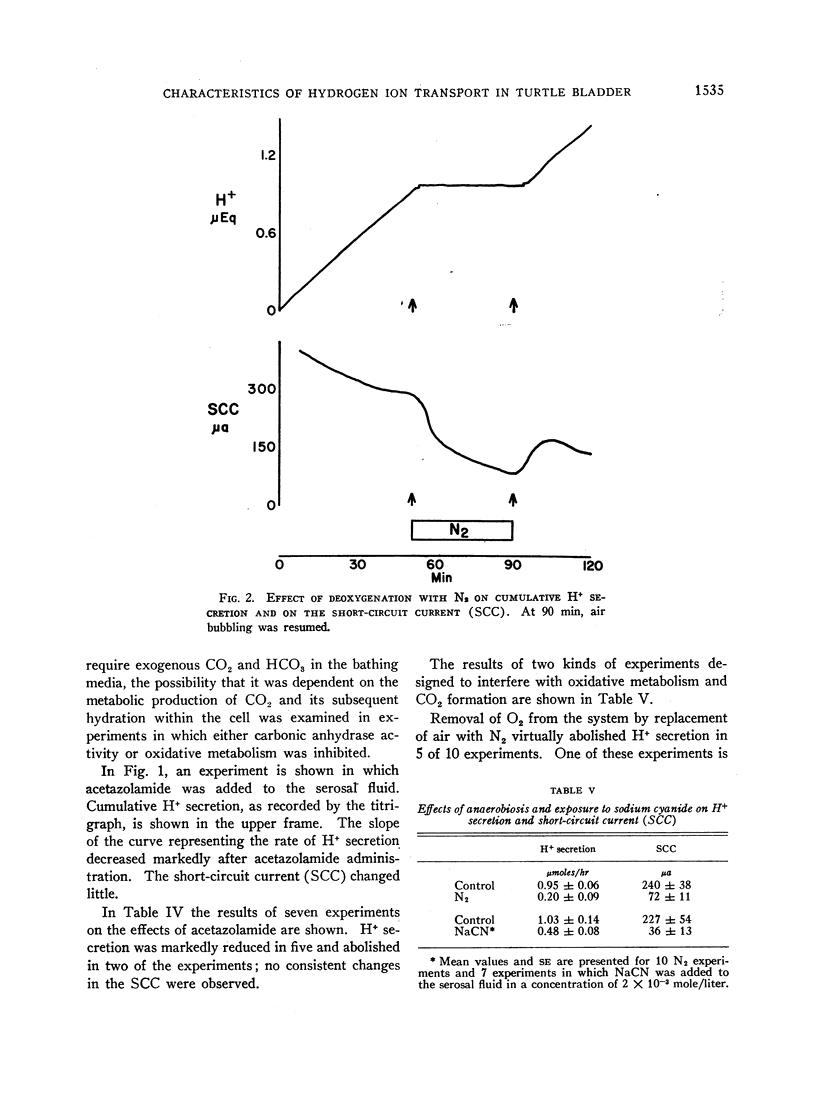

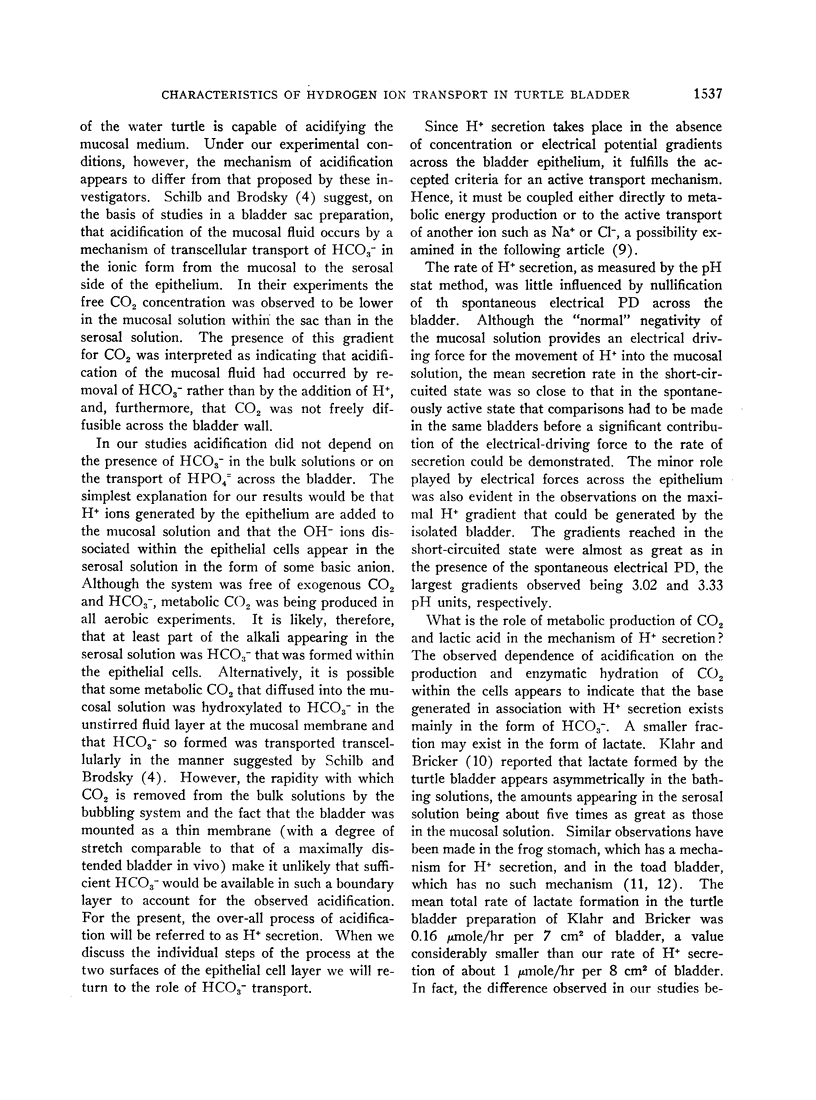

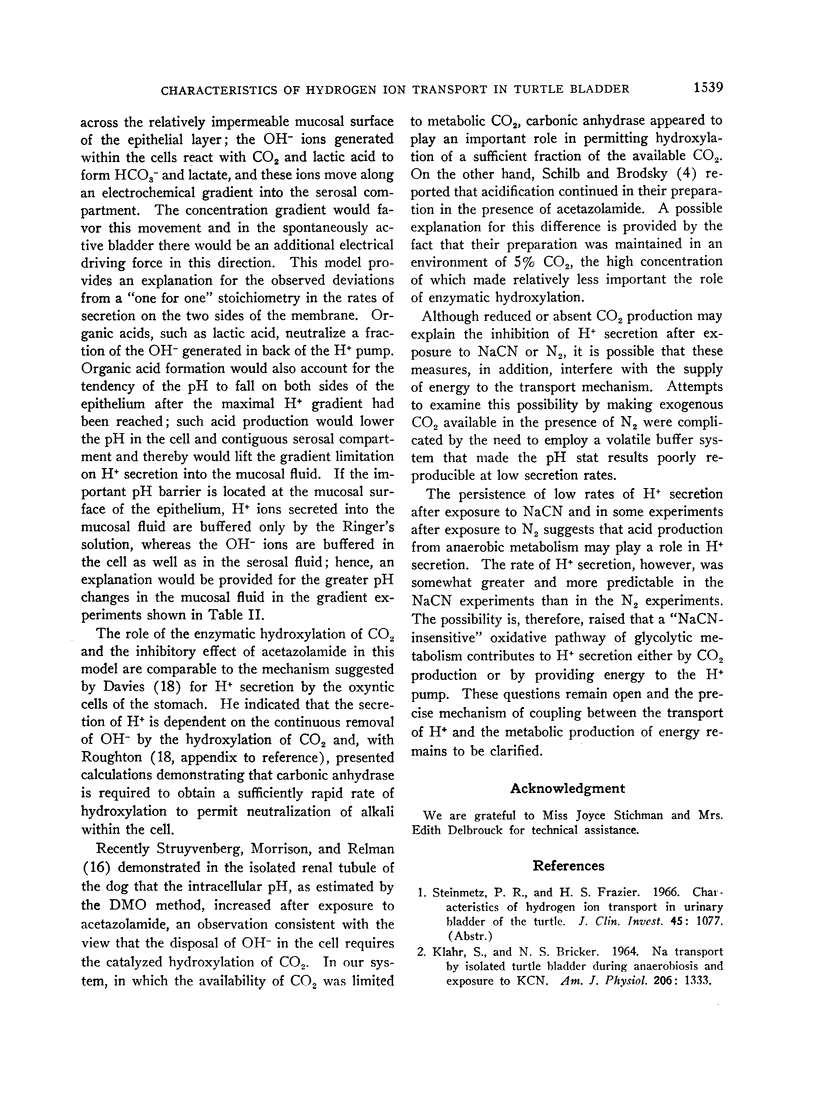
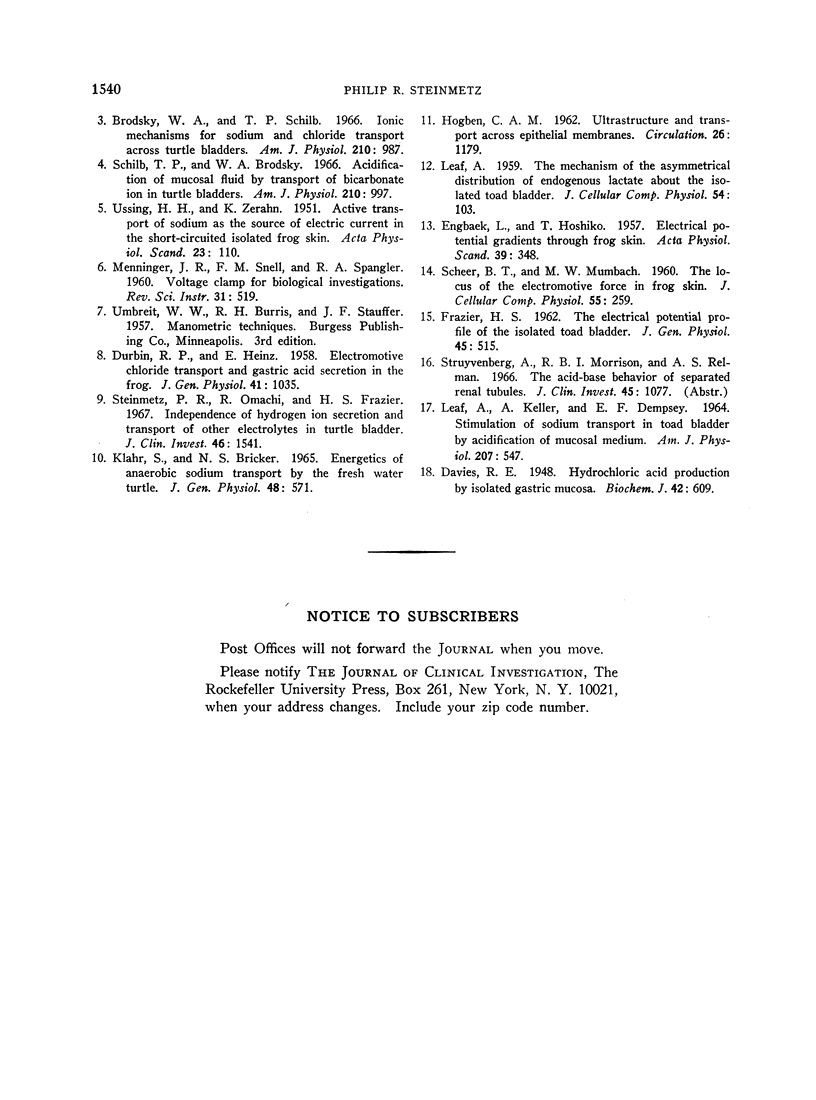
Selected References
These references are in PubMed. This may not be the complete list of references from this article.
- Brodsky W. A., Schilb T. P. Ionic mechanisms for sodium and chloride transport across turtle bladders. Am J Physiol. 1966 May;210(5):987–996. doi: 10.1152/ajplegacy.1966.210.5.987. [DOI] [PubMed] [Google Scholar]
- DURBIN R. P., HEINZ E. Electromotive chloride transport and gastric acid secretion in the frog. J Gen Physiol. 1958 May 20;41(5):1035–1047. doi: 10.1085/jgp.41.5.1035. [DOI] [PMC free article] [PubMed] [Google Scholar]
- Davies R. E. Hydrochloric acid production by isolated gastric mucosa: With an appendix by R. E. Davies and F. J. W. Roughton. Biochem J. 1948;42(4):609–621. [PMC free article] [PubMed] [Google Scholar]
- ENGBAEK L., HOSHIKO T. Electrical potential gradients through frog skin. Acta Physiol Scand. 1957 Jul 1;39(4):348–355. doi: 10.1111/j.1748-1716.1957.tb01433.x. [DOI] [PubMed] [Google Scholar]
- FRAZIER H. S. The electrical potential profile of the isolated toad bladder. J Gen Physiol. 1962 Jan;45:515–528. doi: 10.1085/jgp.45.3.515. [DOI] [PMC free article] [PubMed] [Google Scholar]
- HOGBEN C. A. Ultrastructure and transport across epithelial membranes. Circulation. 1962 Nov;26:1179–1188. doi: 10.1161/01.cir.26.5.1179. [DOI] [PubMed] [Google Scholar]
- KLAHR S., BRICKER N. S. ENERGETICS OF ANAEROBIC SODIUM TRANSPORT BY THE FRESH WATER TURTLE BLADDER. J Gen Physiol. 1965 Mar;48:571–580. doi: 10.1085/jgp.48.4.571. [DOI] [PMC free article] [PubMed] [Google Scholar]
- KLAHR S., BRICKER N. S. NA TRANSPORT BY ISOLATED TURTLE BLADDER DURING ANAEROBIOSIS AND EXPOSURE TO KCN. Am J Physiol. 1964 Jun;206:1333–1339. doi: 10.1152/ajplegacy.1964.206.6.1333. [DOI] [PubMed] [Google Scholar]
- LEAF A., KELLER A., DEMPSEY E. F. STIMULATION OF SODIUM TRANSPORT IN TOAD BLADDER BY ACIDIFICATION OF MUCOSAL MEDIUM. Am J Physiol. 1964 Sep;207:547–552. doi: 10.1152/ajplegacy.1964.207.3.547. [DOI] [PubMed] [Google Scholar]
- LEAF A. The mechanism of the asymmetrical distribution of endogenous lactate about the isolated toad bladder. J Cell Comp Physiol. 1959 Aug;54:103–108. doi: 10.1002/jcp.1030540111. [DOI] [PubMed] [Google Scholar]
- Schilb T. P., Brodsky W. A. Acidification of mucosal fluid by transport of bicarbonate ion in turtle bladders. Am J Physiol. 1966 May;210(5):997–1008. doi: 10.1152/ajplegacy.1966.210.5.997. [DOI] [PubMed] [Google Scholar]
- Steinmetz P. R., Omachi R. S., Frazier H. S. Independence of hydrogen ion secretion and transport of other electrolytes in turtle bladder. J Clin Invest. 1967 Oct;46(10):1541–1548. doi: 10.1172/JCI105645. [DOI] [PMC free article] [PubMed] [Google Scholar]
- USSING H. H., ZERAHN K. Active transport of sodium as the source of electric current in the short-circuited isolated frog skin. Acta Physiol Scand. 1951 Aug 25;23(2-3):110–127. doi: 10.1111/j.1748-1716.1951.tb00800.x. [DOI] [PubMed] [Google Scholar]


